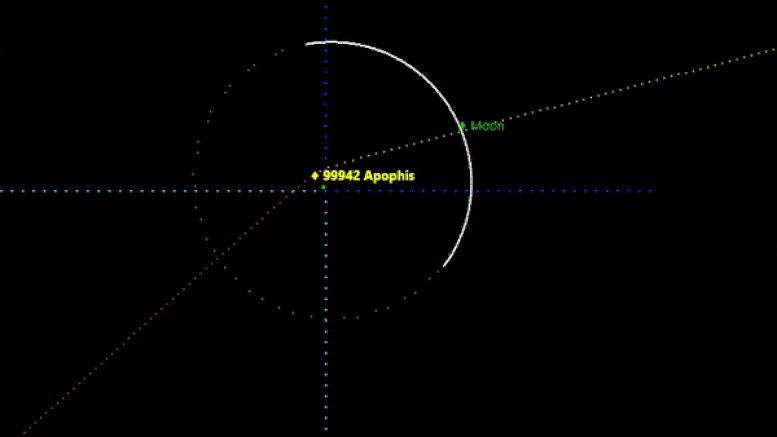Feared Apophis Impact Ruled Out – Asteroid Will Pass Close Enough to Earth to See With Naked Eye
4 Years, 3 Weeks, 4 Days, 23 Hours, 27 Minutes ago

New observations of asteroid Apophis – thought to pose a slight risk of impacting Earth in 2068 – rule out any chance of impact for at least a century. After 17 years of observations and orbit analysis, ESA is removing the enormous asteroid from its Risk List.
Estimated at about 350 m across – equivalent to the length of three football fields – Apophis has been in and out of the headlines for years as astronomers have tried to pinpoint its precise orbit and the possibility of any future impact.
Soon after its detection in 2004, astronomers predicted two impact possibilities in 2029 and 2036, but additional observations of the near-Earth object (NEO) thankfully ruled these out. Until now, a small but concerning chance of impact in 2068 remained.
Recent radar measurements rule out impact
New radar observations of Apophis were taken in early March by NASA’s Goldstone Deep Space Communications Complex in California and the Green Bank Observatory, West Virginia. They have provided enough data on the orbit of the infamous asteroid to finally rule out, with certainty, any Earth impact for at least 100 years.
These latest observations were possible as the asteroid made a not-so-close approach on 6 March, passing by Earth at a distance of roughly 17 million km (44 times the distance to the Moon). Although the asteroid was still reasonably far away, astronomers could precisely measure its distance and refine its orbit before its next, very close approach in 2029.
Apophis through the keyhole
We know the position and orbit of the planets with quite some precision, but for smaller objects like asteroids there is always some uncertainty in their trajectories. To make things more complicated, as asteroids pass by massive objects with huge gravitational forces, their path is altered and this uncertainty in their trajectory is amplified.
Before the latest radar measurements of Apophis were taken, its orbit was understood with enough accuracy to predict a series of safe close approaches over the coming decades.
The next and closest of these swing-bys will take place on Friday, April 13, 2029, when Apophis will pass less than 35,000 km from Earth and be visible to the naked eye. At ten times closer than the Moon, Apophis will be closer than satellites orbiting in the Geostationary ring.